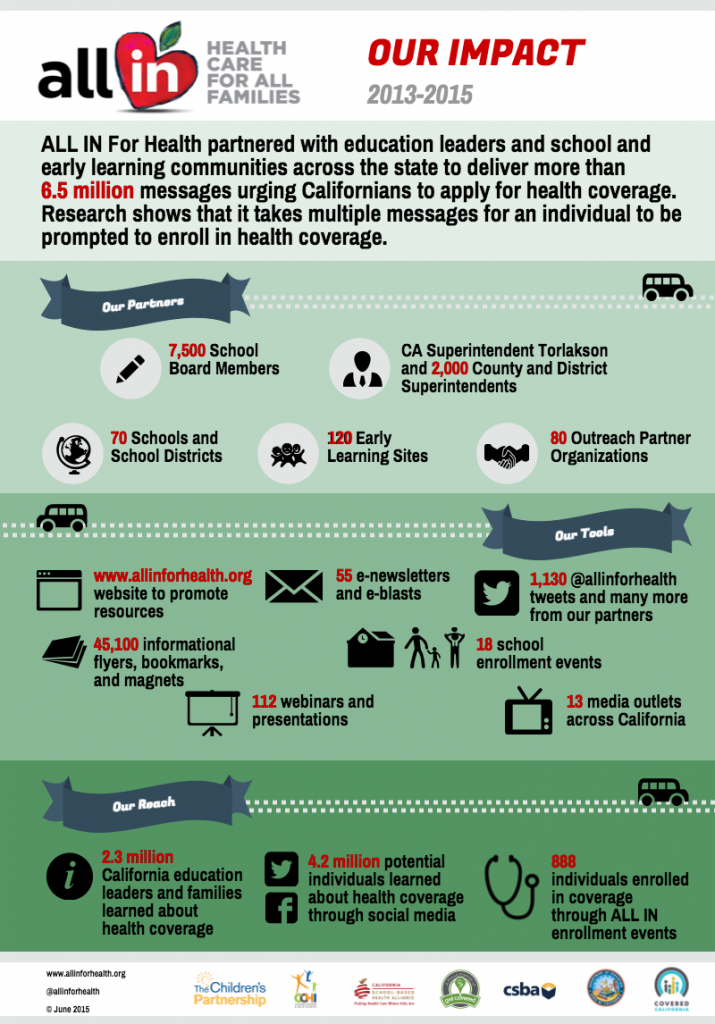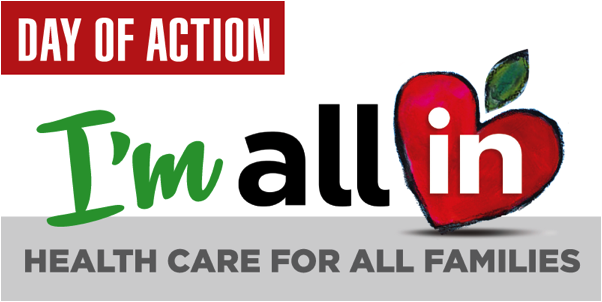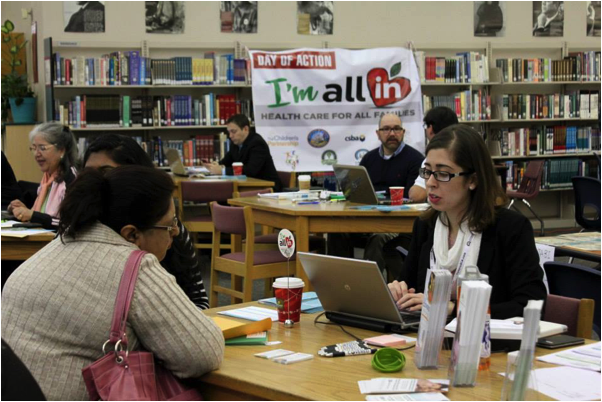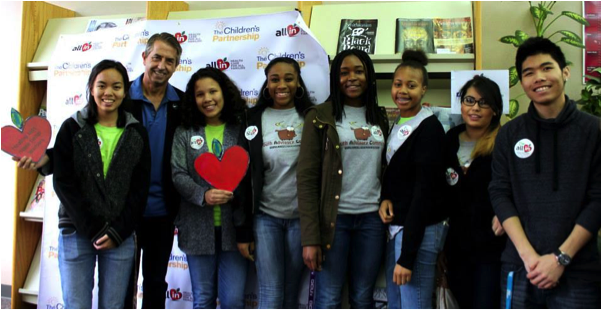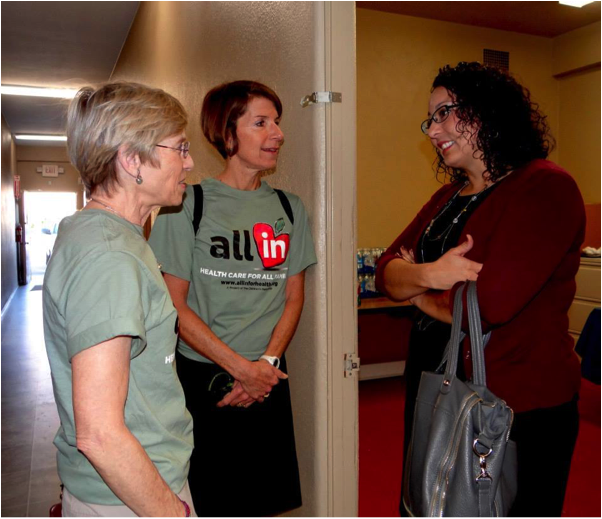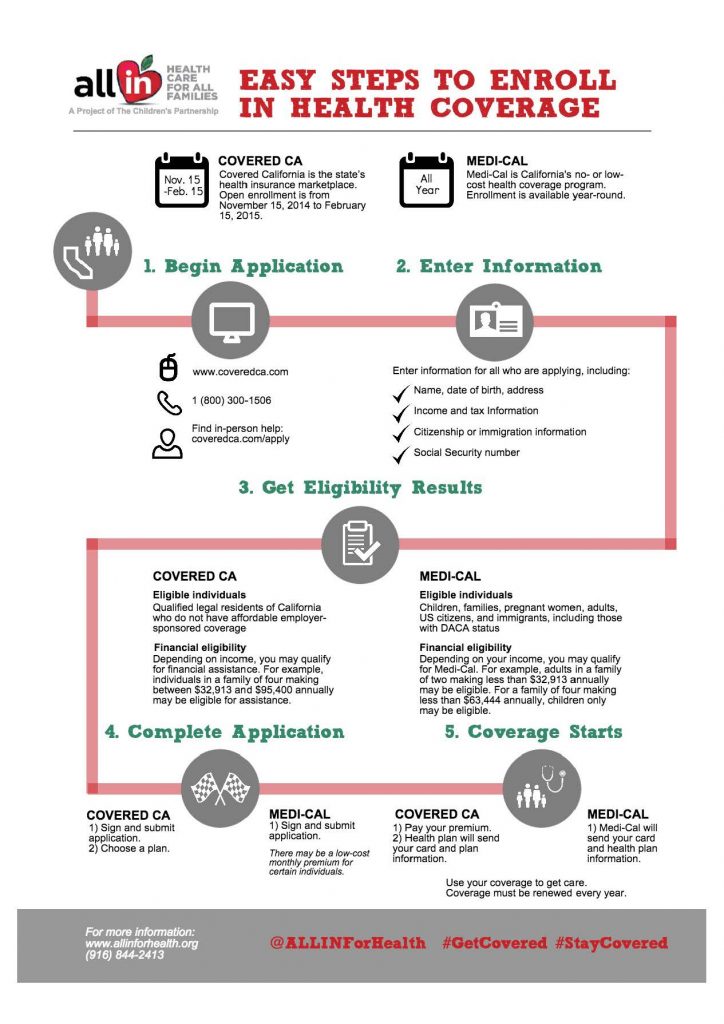Last week, the DentaQuest Foundation, one of our oral health partners, hosted fellow grantees and stakeholders at the annual Oral Health 2020 National Network Gathering in New Orleans with the theme: “Progress, Possibility, and Power.” At the convening, organizations from across the nation discussed how the network can work together towards the bold goals for 2020, including eradicating dental disease in children, and what can be done now.
To guide this discussion, keynote speaker Paul Schmitz, CEO of Leading Inside Out,talked about the values of collective impact and shared some best practices for developing strategies that are inclusive, engaging, and conscious of different organizations’ strengths and weaknesses. Paul urged everyone in attendance to look for leadership where no one else is looking and to recognize that social change always comes from the leadership of many.
The Children’s Partnership couldn’t agree more. From the very start, we have worked with an understanding of the importance of partnerships and networks, and regularly team up with diverse groups across the state to help children thrive. For example, our work with the First 5 Association of California (an association of county-level quasi-public organizations that use public funding and localized programs to meet the health, education, and other needs of young children) led to the Association providing greater input into state policy decisions regarding the future of children’s oral health. Additionally, a Los Angeles stakeholder group we convene has been able to leverage the collective impact of a variety of advocate and provider voices to make greater change in California. And now, TCP is playing a leadership role in the western region of the DentaQuest Foundation’s Regional Oral Health Connection initiative to support and sustain an aligned movement built on the work of oral health stakeholders at the state level.
The Oral Health 2020 convening is a great example of collective impact as it embodies the sense that it takes a network to create large-scale change and achieve the goals of Oral Health 2020. But the power of our network alone is not enough to successfully reach these targets, especially for kids, and that is where we ask you to step in. You can help us amplify the message to improve oral health for all children. In California, TCP is working to encourage policymakers to fix the state’s broken dental care program and develop new workforce models to expand access. Organizations can share our dental flyers to connect children to dental coverage and care. And together, let’s focus on our youngestwho stand to benefit the most. To get involved, contact Jenny Kattlove atjkattlove@childrenspartnership.org.
Learn more about Oral Health 2020 and the gathering in New Orleans by searching the hashtag #OH2020inNOLA on Twitter.

PHOTO: TCP’s Jacob Vigil, DentaQuest Foundation President Ralph Fuccillo, and partners in the network collaborating at the Oral Health 2020 convening
Today, I had the opportunity to present to the Little Hoover Commission, an independent state oversight agency, on ways to help ensure children enrolled in Medi-Cal get the dental care they need.
The Commission’s review, requested by Senator Richard Pan and Assemblymember Jim Wood, is in response to a recent audit of the State’s Medi-Cal dental care program that found poor access to care and lack of oversight of the program that put the more than five million children enrolled in the program at higher risk for dental disease.
When children’s oral health is neglected, they needlessly suffer and lose the opportunity to realize their full potential. Poor dental health can disrupt normal childhood development and seriously damage overall health. Children with poor oral health end up in the emergency room, and they miss school due to dental problems.
The audit report and the efforts of the Little Hoover Commission—along with the fact that we now have a state dental director to lead statewide efforts to improve the oral health of California’s residents—provide the impetus and tools to finally make real change and put California on the path to ensuring its children have the optimal oral health care they need to stay healthy and succeed in school and life.
The Children’s Partnership’s recommendations to improve children’s oral health are threefold:
1. Bring Care to Where Children Are. If we are truly committed to the oral health of all children, bringing timely dental care to where they are can make a big difference. The Virtual Dental Home brings care to children in schools, Head Start sites, or other community settings. We were pleased to see the enactment of AB 1174 in 2014, and we hope to see enactment of AB 648 in the near future to continue to expand this cost-effective approach to dental care for children.
2. Invest in Preventive Care for Young Children. Young children enrolled in Medi-Cal receive dental services at disproportionately low rates, even though their needs deserve particular attention. Early preventive dental care results in better oral health as well as overall health and well-being over a lifespan. The State needs to address the needs of young children, which could include raising reimbursement rates for providers who see this population or raising rates for particular services that impact this population, such as preventive services.
3. Make the Most of Our Workforce. We can no longer assume that the dentist is the only provider that can address children’s dental care needs. It takes a team to provide the comprehensive oral health education, care management, and treatment families need. Dental hygienists and assistants are helping to bring care to where children are through the Virtual Dental Home. Community health workers can play a vital role in educating families about the importance of good oral health and how to achieve it, as well as connecting families to services. And home visitors can also play a critical role in getting families off to a good start. California should explore how to adopt and support best practices for expanding outreach, education, and services to improve dental care. Improving the oral health of California’s underserved children is a top priority for The Children’s Partnership, but it will take a coordinated effort of the Administration, the Legislature, and stakeholders to truly make a difference. We look forward to continuing to work with the State to ensure that Medi-Cal’s children—more than half of all of California’s children—have the good oral health they need to be healthy and succeed in life.
Back-to-school time is here, which is the perfect time to help connect children and families with health coverage and care! In fact, this year, schools in California are required to inform families about health coverage opportunities when kids enroll in school. To help schools comply with this new law (AB 2706), The Children’s Partnership’s ALL IN For Health Campaign has a brand new toolkit with everything schools need.
This newly launched Back to School Toolkit has a suite of materials to help schools reach families with easy-to-understand enrollment information. For example, the 2015–2016 School Year Calendar is an exciting new piece for school leaders that lays out a clear roadmap of health coverage outreach activities that fit into the school calendar to help educators schedule out activities. The toolkit also includes the newly released “Are you DACAmented?” flyer that will help schools reach families who have children with DACA status and connect them with health coverage.
As kids’ advocates, The Children’s Partnership has worked since its founding to better the health of children and families throughout California and across the nation. The ALL IN For Health Campaign has been a key part of that mission.
In order to leverage the once-in-a-generation opportunity provided by the Affordable Care Act to extend health coverage to more Californians than ever, we have partnered with the education community. Educators interact with millions of families every day and understand better than anyone that healthy kids make better learners.
We’re excited to continue our work assisting and equipping schools to help keep children and their families healthy. The Back to School Toolkit builds on our two years of experience and brings our best resources yet to school leaders statewide.
Check out our Back to School 2015 Toolkit.
Lessons learned from two years of the ALL IN For Health Campaign
When the education and children’s health advocacy leaders in California came together two years ago to partner for student and family health, no one knew what the outcome would be. As California was preparing to roll out new health coverage options for families and individuals as part of health care reform in summer 2013, California State Superintendent of Public Instruction Tom Torlakson partnered with The Children’s Partnership. Together, we called on the state’s education leaders to work with child health advocates to help families connect to new health coverage options. The message was that no one knows better than teachers, school personnel, and other education leaders that healthy children make better learners.
As a result of this call to action, The Children’s Partnership launched the ALL IN For Health Campaign with a simple mission: equip schools, early learning centers, and after-school programs with the tools they need to help more kids and families enroll in health coverage. At the time, California was gearing up to launch its first open enrollment period through Covered California, the state’s Health Benefit Exchange, and provide more Californians with coverage through expanded Medi-Cal, California’s Medicaid program. With new affordable health care options coming to families across the state, ALL IN For Health identified schools, early learning centers, and after-school sites statewide as places where thousands of families could learn about their new options and find out how to enroll in a plan that meets their needs.
This model has proven to be highly successful; over the last two years, with our partners in the education community, ALL IN For Health has delivered more than 6.5 million messages across the state informing families about health coverage options and how to enroll, and encouraging them to take action to get covered. Research has shown that consumers need to be prompted multiple times before they enroll in coverage, making ALL IN’s voice an important one in the push to get more Californians covered.
In the past couple of years, we’ve learned some valuable lessons about what works in partnering with the school community to reach families and students with important health information. For example, we learned that partnering with well-respected leaders in the education community and offering them an easy-to-implement game plan with off-the-shelf materials is vital for getting buy-in and making sure these leaders can easily engage in outreach activities. We also learned that speaking the schools’ language and tying activities to the school calendar really works in getting more families enrolled in health coverage.
Check out our Summary Report for more details on what we’ve learned and ideas for how you can bring a campaign like ALL IN to your community. Not convinced yet? The numbers in our infographic speak for themselves.
This past Monday marked the fifth anniversary of the Affordable Care Act (ACA), a significant milestone and excellent opportunity to assess the impact this historic law has had on the health of California’s families and children. Our state has led the way in implementing the reforms included in the ACA, which has helped provide health coverage to more families than ever. The uninsured rate for all Californians fell by as much as 60 percent, and we can proudly say that 93 percent of kids in California are insured.
Through the state’s health exchange, Covered California, the State is insuring more than1.8 million individuals, an estimated 101,000 of whom are children. The State also expanded Medi-Cal eligibility to more adults, resulting in 2.7 million additional enrollees. In addition, California provided state-funded Medi-Cal to individuals with Deferred Action for Childhood Arrivals (DACA) status. In the last two years alone, California enrollednearly 1 million young people in Medi-Cal. Along with other reforms, Medi-Cal now covers more than half of all children in the state.
Thanks to the ACA, Californians and millions of individuals across the country benefit from an improved health care system. Those with preexisting conditions can no longer be denied coverage due to their health. The lifetime limit on health coverage has been eliminated, meaning that those with chronic conditions or in need of costly treatment will be able to continue to reap the benefits of health coverage no matter the cost. And young adults under 26 can stay on their parents’ insurance, providing an important bridge as younger Americans transition to adulthood. Health coverage now works better for Californians.
While we’ve accomplished so much together in the last five years, our work to cover all families is not done. Many families who are eligible for coverage do not understand how to enroll; there is much work to be done in educating them about their health coverage options and helping them enroll into coverage. Additionally, certain undocumented immigrants remain ineligible for coverage through Medi-Cal or Covered California, and, as a result, an estimated 170,000 California children remain uninsured due to their immigration status.
All California children deserve a healthy start in life, and our state is stronger when everyone has access to health care, including our immigrant children and families. We hope that the current injunction against President Obama’s Immigration Executive Action is lifted so that California can continue progress on this front and that the state will continue to lead the way by passing SB 4 (Health4All), which would provide affordable coverage to all Californians regardless of immigration status.
With these eligibility barriers removed and strong community education and outreach, California can make tremendous progress toward reaching our goal of providing affordable health coverage to all. With determination, we hope to soon celebrate another important milestone: 100 percent coverage for all families.
Photos below from a Affordable Care Act 5 year anniversary celebration with our partners in Los Angeles: Health Access, Planned Parenthood Los Angeles, California Partnership, Children Now, Children’s Defense Fund-California, California Immigrant Policy Center, Young Invincibles, and more.
With less than two weeks to go before the February 15 Covered California Open Enrollment deadline, ALL IN For Health has ramped up its efforts to reach as many families as possible through schools, early learning and care, and after-school sites.
On Saturday, January 24, we kicked off a 22-day statewide campaign to connect families to coverage. In partnership with Montebello and Natomas Unified School Districts, we hosted Day of Action health coverage information and enrollment events. Over seventy families enrolled in affordable coverage with the help of Certified Enrollment Counselors and even more learned about their health coverage options through Covered California and Medi-Cal. Every family that enrolled helped grow the number of California kids who have the opportunities that a healthy upbringing affords.
At Natomas High School, the Executive Director of Covered California, Peter Lee, stopped by to relay his enthusiasm that schools are spreading the word that health coverage is now within reach.
In Montebello, local Assemblymember Cristina Garcia stopped by to show her commitment to expanding health coverage in her community.
And our partners at LA Care presented lively educational skits on how to take advantage of health coverage.
With the February 15 deadline fast approaching, now is the time to spread the word about applying for health coverage. Schools across California know that healthy kids make better learners. That is why they are taking action for the health of their students by sending out eBlasts, making robocalls, and distributing enrollment information. And with several more events planned, you can even get out and learn more yourself with the help of Certified Enrollment Counselors.
Learn more and get involved at http://www.allinforhealth.org/dayofaction.
We Are ALL IN for Open Enrollment
We are a few weeks into the open enrollment season and TCP’s ALL IN For Health Campaign is working overtime to make sure schools and early learning centers have the materials they need to help uninsured children and families enroll or renew their enrollment in affordable health coverage. Open Enrollment for Covered California runs until February 15, 2015. This is an opportunity for individuals without health coverage to shop and sign up for health plans through Covered California. They may also be eligible for Medi-Cal, which families can enroll in all year long. Individuals can sign up for both programs at www.coveredca.com.
We developed an infographic to help families enroll in just a few easy steps.
Infographic: Easy Steps to Enroll in Health Coverage (Spanish)
We also worked with partners to develop English and Spanish family flyer, school flyer, and bookmark for schools to share with families. In addition to downloading these materials, you can order them here.
Besides Open Enrollment for new coverage, it’s also time to renew Covered California health plans. In October, Covered California started notifying individuals who signed up for health coverage last year about the need to renew their health coverage. Those enrolled in Medi-Cal will renew their coverage on the anniversary of the month they enrolled.
TCP’s ALL IN For Health Campaign works with partners—such as the California Department of Education, California School Boards Association, California School-Based Health Alliance, California Coverage and Health Initiatives, Covered California, The California Endowment’s Get Covered Campaign, and many others—to equip education leaders with the tools they need to educate families and individuals in the school, early learning, and after-school communities about health coverage opportunities and connect uninsured children, parents, and employees to health coverage.
Learn more: http://www.allinforhealth.org/.
- « Previous
- 1
- 2
